It was already hard for many lifelong Pilsen residents to hold on to the place they call home with the rising cost of living and the pandemic didn’t make things easier. Homeowners and business owners have noticed their property taxes double, the viaducts are sheltering more houseless people than ever, gang violence is a constant, and some families are asking themselves whether they should put that rent money toward a mortgage somewhere else.
While preliminary Census numbers suggest the community has lost an additional five thousand Mexican and Latinx residents in the last ten years, likely an undercount, it doesn’t mean community members are giving up. In 2021, 18th St. saw local businesses begin to reopen. Relationships are being rekindled, grassroots efforts are being revitalized, and culture continues to be practiced. These things are the building blocks of Pilsen.
This year it feels appropriate to lift up the work of artist Salvador Vega, who’s in the process of renovating a mural on 18th, which he originally worked on with artist Aurelio Díaz in 1978 to honor the life of reformed gangbanger David “Boogie” Gonzalez.
Boogie was shot in the chest in 1973 in Zapata Park, today known as Harrison Park, after attempting to diffuse a conflict between rival gangs. “Our carnal (brother) was trying to talk ‘peace’ with members from different clubs who were about to get it on,” read a flyer announcing a march in his memory a month after his death. He and others had spent a year brokering a peace treaty that was abruptly cut short.
Today, with the blessing of the Gonzalez family, the building owner, and the alderman, Sal is recreating the faded mural on 18th and Throop through a kaleidoscope of bright colors, a reference to Tenochtitlan, and a portrait of Boogie next to a dedication that says, “Boogie was the first to unite the clubs on 18th St. to bring about peace and unity.”
Both Sal and Boogie lost their brothers to gang violence, and the relevance of the mural nearly fifty years later is a tragic reminder that while the community has made strides across generations, it continues to hope for a better future for its children and youth. It reminds lifelong residents of all the sacrifices they’ve made, and that there are unfinished battles within and outside the community to be fought.
This collaboration between a Pilsen family, a local artist, a property owner, and an elected official is a testament to different sectors of the community working together toward a common vision of community. (Jacqueline Serrato)
Neighborhood captain Jacqueline Serrato is the editor-in-chief of the Weekly.
Best Mexican American Brunch
Frida Room
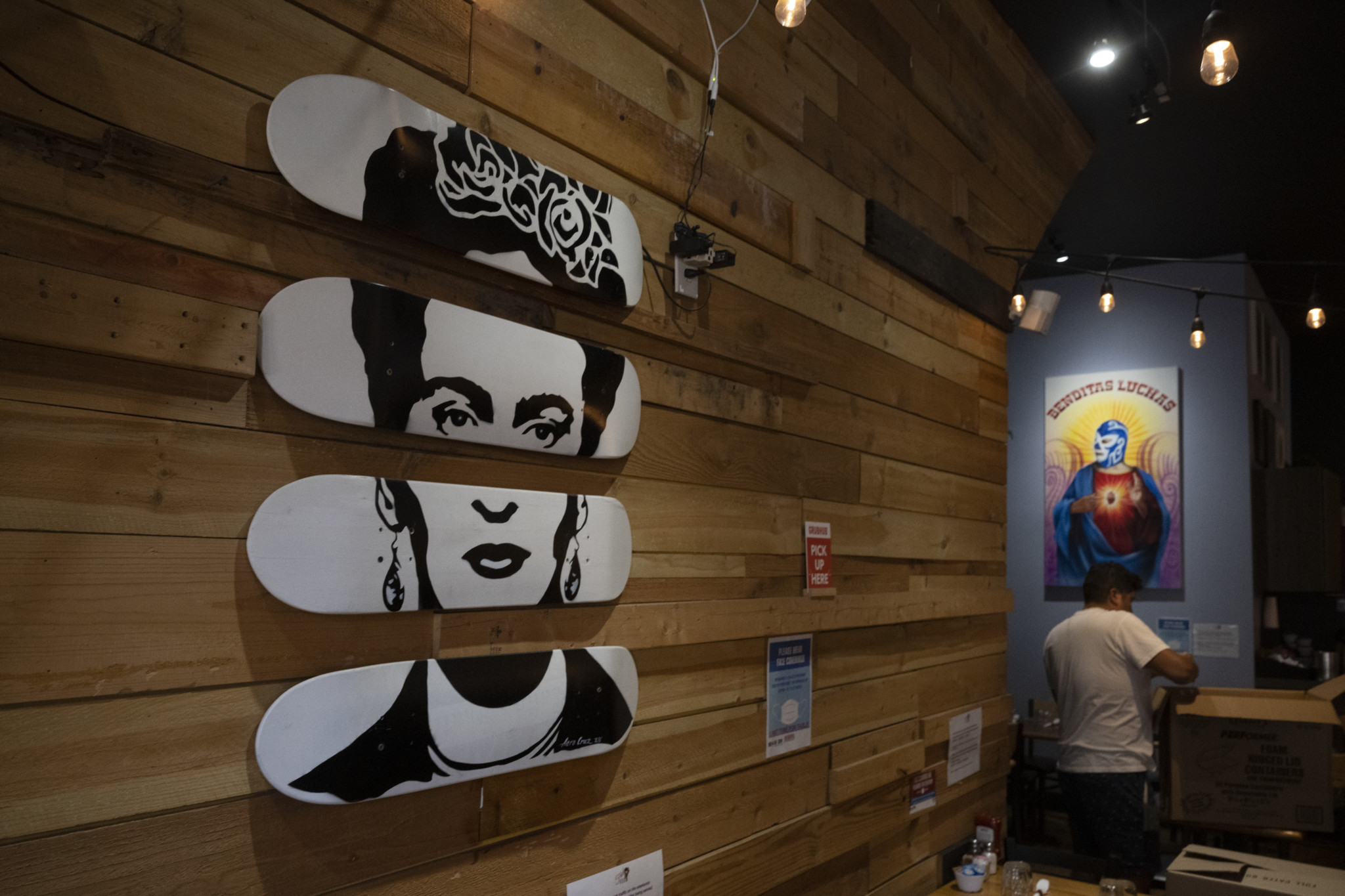
Every time I come back from my college town, the perfect brunch date with my sister is a blend between Mexican and American food in one brunch spot, Frida Room, a family-style cozy layout highlighting the modernist painter Frida Kahlo. Wherever you look there is pop art, whether it’s a portrait of Frida or a luchador. My favorite part would have to be the altar that is set up for the Mexican icon herself in the middle of the room. The establishment is always displaying our culture and showing their respect for the person whom this location was named after.
You can enjoy a nice breeze that comes in through the wide open windows and a view of the buzz on 18th St. Upon arrival, the aroma hits you with a deep feeling of nostalgia, gives you a sense of home, and definitely adds to your appetite.
When I was younger and visiting Mexico, my grandfather would wake me up to the smell of a freshly-made pot of café de olla. Walking into Frida Room took me back to those times. For the coffee lovers like myself, they have many options, but a highly recommended one is their lattes, hot or cold. They offer unique flavors such as cajeta and coconut, but also traditional, cinnamon, vanilla, and mocha. The cool part? There are non-dairy options!
The variety of foods and flavors accommodates everyone in the family. From French toast and sandwiches, to chilaquiles and huevos rancheros. The chilaquiles can be either verdes or rojos. An option that was new to me was campechanos, which appears to be a blend of the two; perfect for those who are indecisive and, instead of picking one, can have the best of both worlds.
You can choose between indoor and outdoor seating. They also provide carryout and GrubHub if sitting down to eat is not on your radar yet. If weather allows, after your meal you can take a stroll down Pilsen to shop, walk your food off, and support small businesses. (Cynthia Salgado, Yollocalli Arts Reach)
Frida Room, 1454 W. 18th St. Monday–Friday, 8:30am–2:15pm; Saturday–Sunday, 8:30am–2:45pm. (312) 631-3620.
Best Hot Dog Stand
Emilio’s Hot Dogs
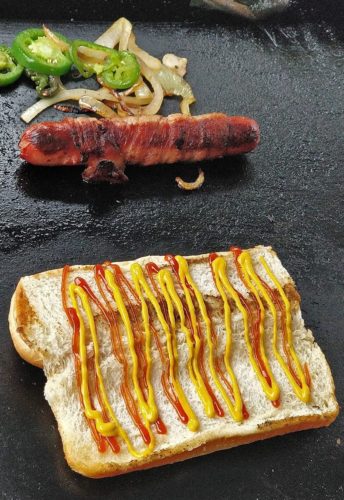
Chicago has the best hot dogs in the country—and that is not up for debate. What makes the Chicago-style hot dog so special are the layers of cultural influences it embodies from German, Jewish, and Polish immigrants who settled in this meatpacking city.
A born-and-raised Pilsen resident, Emilio Moreno loves a Chicago-style dog, with its mustard, relish, onion, poppy seeds, tomatoes, pickle spear, and celery salt—sans ketchup. But the hot dogs that he vends outside of his house on hot summer nights are not quite Chicago-traditional. Still, they’re as authentic to his immigrant family’s identity as they come.
Before they met, Emilio and his wife, Noemi Ortega, had enjoyed Mexican street hot dogs in their respective hometowns in Michoacan and Jalisco. After they got together, the couple went to taste the locally famous hot dogs at the Plaza de San Marcos in Aguascalientes, where the hot dogs are commonly known as “jochos.”
“They are hot dogs wrapped in bacon,” Emilio said. “The reason for this is because hot dogs in Mexico are a mixture of pork, beef, and chicken, so in order to add a better flavor to the [meat] they wrapped them in bacon.”
Other key ingredients in the jocho are sauteed onions and grilled jalapeños, which bear a resemblance to the garnishes of the Maxwell Street Polish (RIP Jim’s late night hours). The jocho also comes with diced tomatoes and is topped with mayonnaise or sour cream, and yes, ketchup!
The Pilsen version is practically a jocho with a Chicago twist. The one hundred-percent-beef local hot dog brand and a squirt of yellow mustard are the elements that make it Chicago.
Emilio and Noemi aspire to one day open a brick-and-mortar restaurant on the famous 18th St., but that goal is not easy for first-generation business owners in a trendy neighborhood. For now, they enjoy interacting with people from their block and serving customers young and old, many of whom are other Mexicans from Pilsen, La Villita, Back of the Yards, and the suburbs.
If a Chicago-style hot dog represents the essence of this hard working immigrant city, then Emilio’s Hot Dogs is the modern iteration of this long culinary tradition. (Jacqueline Serrato)
Emilio’s Hot Dogs, 2318 S. Hoyne Ave. Monday–Friday, 6–10pm, weather permitting.
Best Healing Space
El Paseo Community Garden
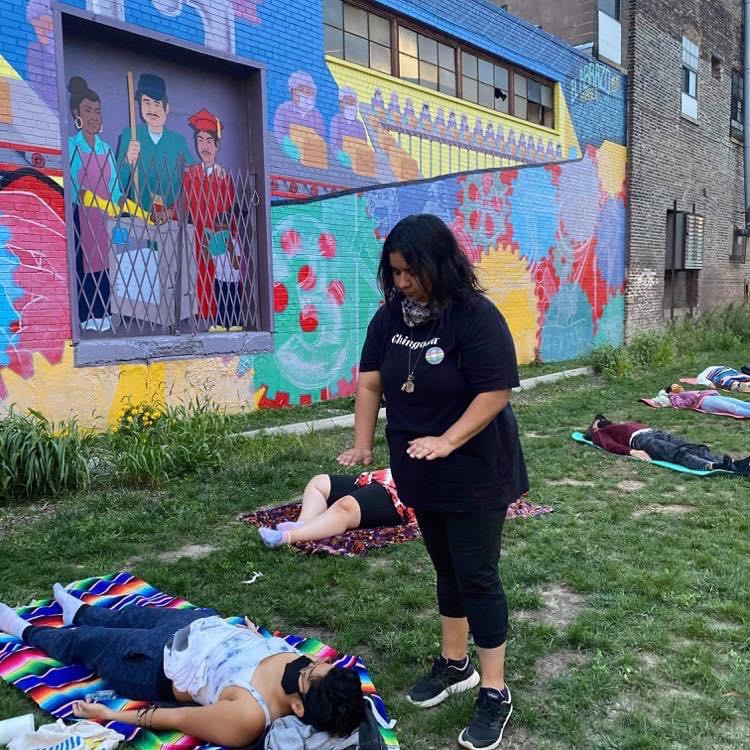
Hidden behind new lofts and other rehabbed industrial buildings on the east side of Pilsen—the more gentrified side of the neighborhood—is a community garden that local residents have taken ownership of in recent years.
Formerly a contaminated empty lot with train tracks cutting through the hard dirt, El Paseo Community Garden is now an active green space that produces vegetation, showcases a mural, and hosts activities almost every day.
The remediation of the site was spurred by a planned development in the area. While that project is currently stalled, the entire city block has come to life thanks to the maintenance, unity, care, and constant presence of the community.
The use of El Paseo Garden has been especially important throughout the COVID-19 pandemic, according to Pilsen native Cristina Puzio, who has maximized the space to provide outdoor socially distanced group healing.
Since 2016, Cristina, who is an energy healing practitioner and meditation instructor, has gathered people in the garden to help guide them to look inward. In 2020, when people everywhere were feeling isolated, drained, and grieving, El Paseo Garden became a popular —and safe—source of catharsis.
“Especially families of color. Families that may feel like they can’t take up space. Families in need of relaxation and mental wellness,” Cristina said. “Young people that are BIPOC and LGBTQIA also join our [events] and it is just beautiful to know we can be there for them. We can allow them to feel safe enough to take up space and reclaim their spiritual essence.”
Her sessions usually begin with people sitting or laying on the grass with their eyes closed or looking up at the sky. She offers fifteen minutes of mindfulness, enhanced by sound healing, which consists of the purposeful listening to individual music instruments or “listening to the sounds around them and then listening to the sounds inside them, which is the sound of their breathing,” Cristina explained. “This helps center them before starting the meditation.”
As she weaves between participants during the meditation, she tries to inspire self awareness, teach grounding techniques, and introduce Indigenous-based practices.
The garden is located next to Alivio Medical Center and a senior center called Casa Maravilla. The foot traffic attracts families, the elderly, children, and dogs to the open space that they might have otherwise not come across.
“We all just want to feel safe and supported and if we can find that in meditation, reiki, sound healing and practices like Curanderismo, then why not offer that to our community?” (Jacqueline Serrato)
Best Tortas
Doña Torta Chilanga
I owe all the credit for introducing me to the most delicious, mouth-watering, decadent, juicy tortas in all of Chicago to my dear friend Stephanie. I don’t know why, but tortas have always been my favorite thing to eat at a Mexican restaurant.
Since I was a kid, even my parents knew my order would always be the same. “Una torta de asada con todo y una sangría.” I would read down the menu filled with seemingly hundreds of combinations of tortilla, carne (meat), salsas, vegetables, and frijoles (beans)—all the same just in different presentations: tacos, gorditas, flautas, sopes, huaraches, and tostadas. But the minute my eyes graced the word “torta,” my hungry little soul knew that was what I needed at that moment.
There’s an unimaginable amount of options possible at Doña Torta Chilanga for around $10: asada, jamón, huevo, pollo, milanesa, and aguacate for the vegetarians. I’m thankful to tortas for existing and providing me the nourishment I’ve needed to keep my blood running after all these years. They really are a gift sent from heaven.
Speaking of heaven, let me tell you something about my girl, miss Doña Torta Chilanga in Pilsen. Picture this, you walk into a lil’ shack with Mexican ceramic tiles on the tables and booths worn from generations of grannies sitting there. There are photos of famous people on the wall who your Mexican parents seem to know, even though you have no clue who they are and—wait, is that Paquita la del Barrio?
You’re instantly engulfed in the intense scent of grease, grilled meat, and melted cheese. You can taste a cold drink on the tip of your tongue. Ooh girl, sign me up!
When you sit down you’re greeted with some hard tortilla chips that taste five days old… I promise I’m not leaving a bad Yelp review, I’m on my way to the good part: the menu. The whole reason you came was the limitless torta combinations: “La Chilanga,” “La del Chavo del Ocho,” “La Doña Guapachosa,” “La Señorita,” “La Rusa”, “La ‘No Era Penal’,” “La Memo Ochoa,” and my all-time favorite, “La Bomba.” Imagine a cow, pig, and a bolillo walk into a room, then ignite. Boom, that’s “La Bomba.”
They start by toasting a bolillo and smothering it with mayonesa, then they add what seems like a pound of chopped asada, ham, and bacon mixed with fresh lettuce, onions, tomatoes, and melted cheese on top. It comes to you in a cute little basket the size of a football (they’re literally nicknamed “tortas futboleras”) and you can squeeze some lime and salsa verde on top. I take the biggest bite into it and mmmm-mmmm-MMMM.
I always forget that they only accept cash even though I come here once a month, and have to convince Steph to pay. Honestly, writing this hurts me because I wanted to keep this place all to myself. Gatekeeping? Maybe. Delicious? Very! (Emmanuel Ramirez, Yollocalli Arts Reach)
Doña Torta Chilanga, 2152 W. Cermak Rd. Monday–Sunday, 11am-11pm. (773) 927-3497.
Best Plant Pop-Up
Semillas Plant Studio
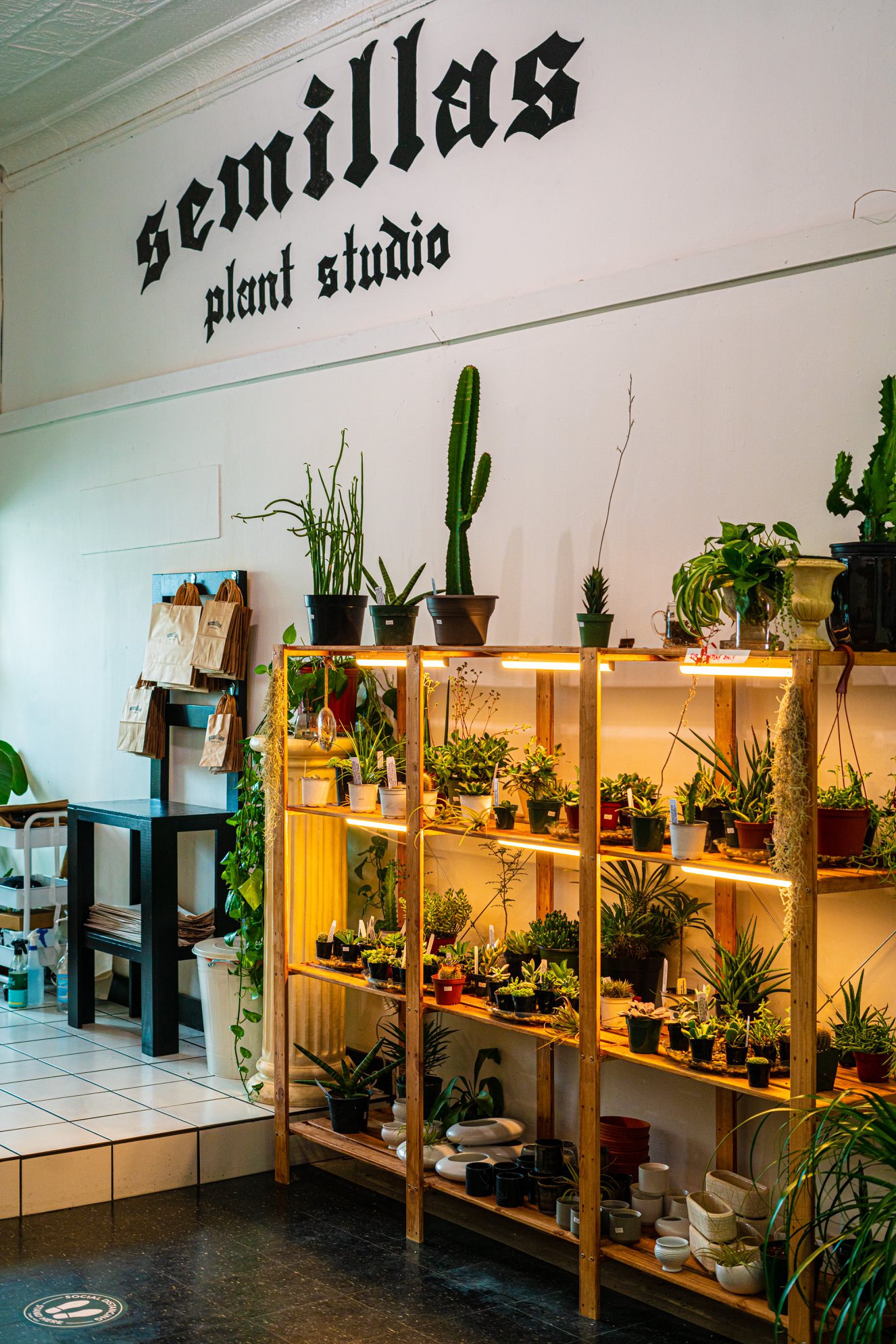
It’s undeniable that many of us are secretly turning into our grandmas: we love growing plants, shopping for them, and dedicating time and love to our plant babies. Throughout the pandemic, I picked up plants from stores like Home Depot, Lowe’s, and Target. However, I love a good local Latinx owned plant shop that I can tell everyone about so we can support local businesses.
Angelica Varela is a Pilsen native and proud owner of the one and only Semillas Plant Studio, which closed down in June to focus on outdoor vending. Varela has expressed a deep-rooted connection with her family’s history of taking care of plants. It goes back to her early childhood, which are shared memories with her grandmother and her Mexican culture.
Tending to plants and being surrounded by them has helped her mental health, and many people who own plants, myself included, can also agree. During the start of the COVID-19 pandemic last year, a lot of us needed something to shift our focus on to avoid spiraling into a dark state of mind.
In July 2020, Semillas Plant Studio opened doors as a sanctuary space during the pandemic—a lovely shop to stop by with your friends that is instagram-worthy and to take a deep appreciation of the wide variety of plants that the chic studio had to offer: pothos, snake plants, anthuriums, gorgeous monsteras and so much more.
Before their closure, they were constantly switching out inventory to provide something new for returning customers, restocking beautiful pots for your plants and even delicious coffee for you to sip on while browsing the store. Aside from that location, they offer workshops and pop-ups at other places in collaboration, like Semicolon Bookstore & Gallery in Fulton River District, Mi Tocaya Restaurant in Logan Square, Caminos de Michoacán in Pilsen and Osito’s Tap in La Villita.
Keep up with their social media and watch out for their next pop-up location until the main studio reopens and support this Latinx-owned business! Pick up one plant, two plants, and or even three plants to help your mental well-being, beautify your home and spice it up, or even gift one to a friend. It is so important that we shop locally so we can become a community that is constantly growing and thriving, especially in times like these when we need to be extra kind to one another and find ways to bring nature into your home. (Jennifer Lara, Yollocalli Arts Reach)
Semillas Plant Studio, pop-ups at various locations. Instagram: @semillasplantstudio.



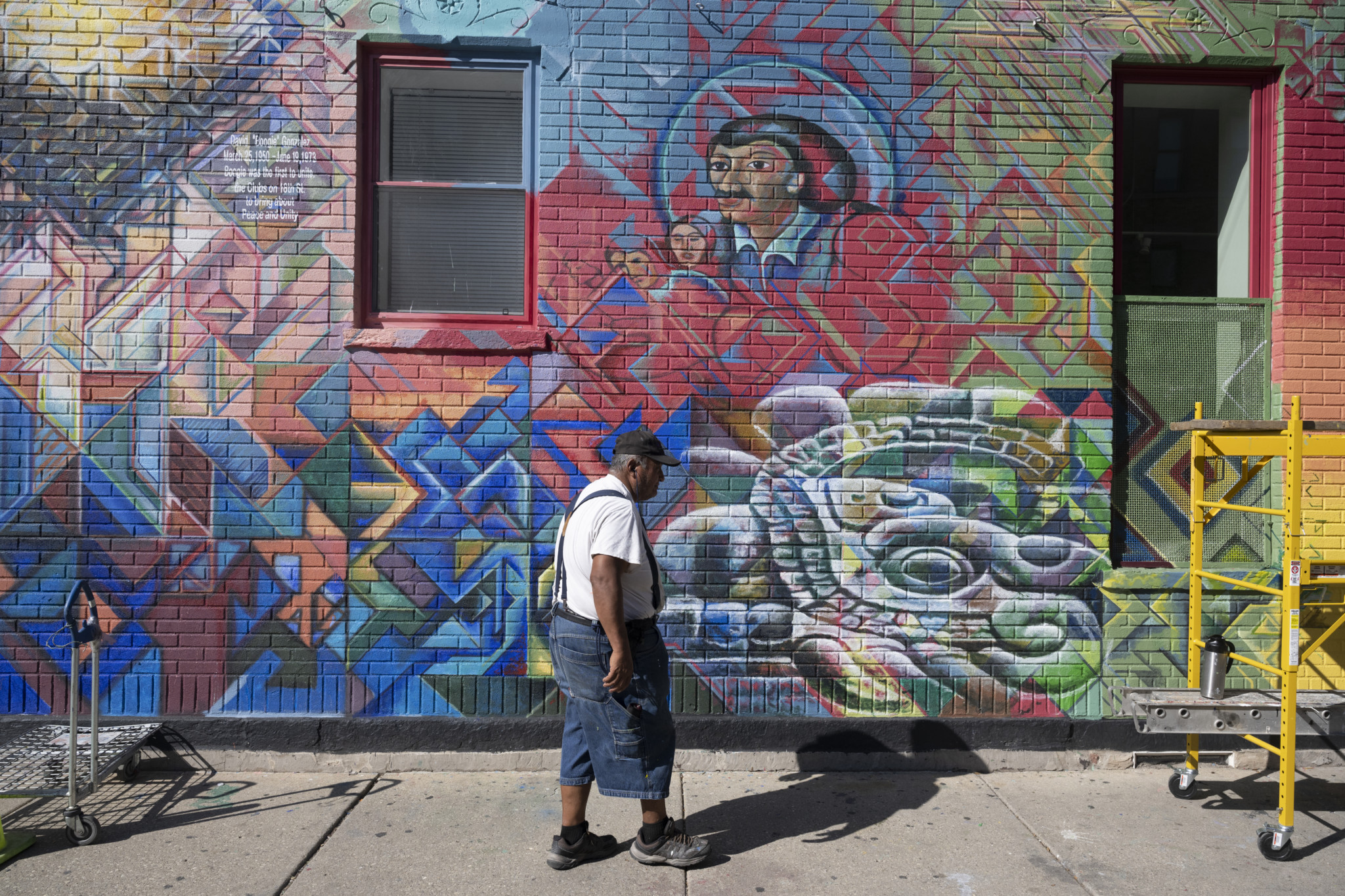
I really wish I had a plant shop like that. The way you describe it makes it sound so safe I admire the local spots that give you some safety. Although I don’t have one close to me, just reading about it makes me feel safe.